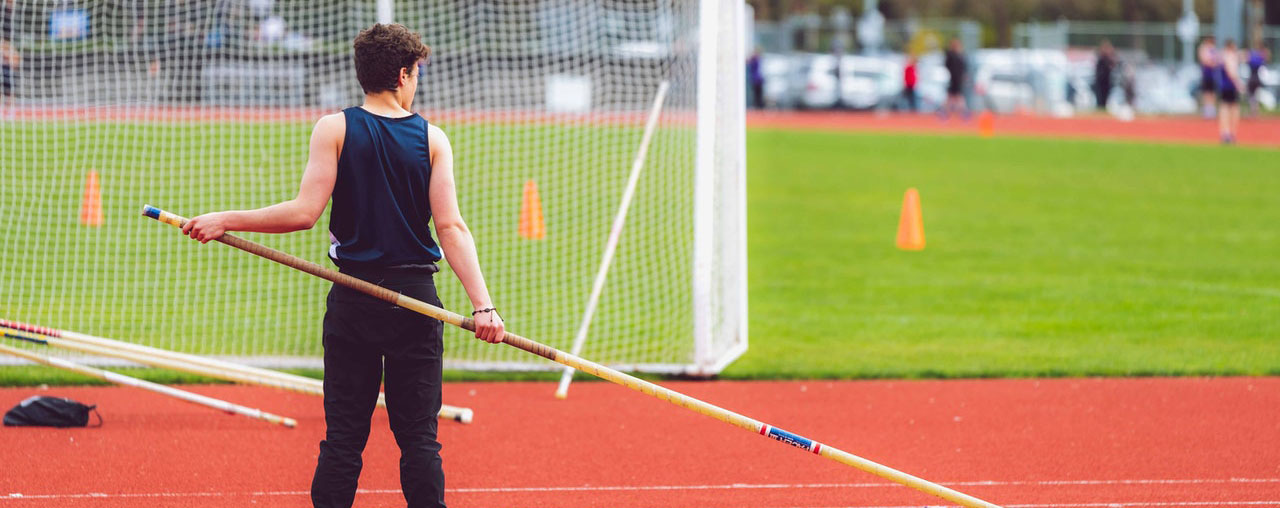This post is part of a 2-part series. Read Part 2 here
The college athletics experience is different for everyone, but there are a lot of similarities across schools and across sports, and there are plenty of lessons to be learned from any college athlete. I am here to share my experiences and hopefully some wisdom for anyone interested in pursuing collegiate athletics.
First, let me give some background on myself. I am a recent graduate of Cornell University where I competed for four years as a pole vaulter for the men’s track and field team. Additionally, I grew up in Louisville, Colorado, where I attended Monarch High School and played football and basketball and ran track.
Recruiting and Communicating
The first hurdle you’ll experience in the college athletics process is recruiting and communicating with coaches. All coaches communicate in different ways, and I know the recruiting rules are different for every sport, so it’s very beneficial to do a little research on what the rules and guidelines are for your specific sport. Most of that information can be found on the NCAA’s website. Once you’re familiar with your specific sports process, you should be ready to reach out to coaches. Communication is a two-way street, so there will be coaches that reach out to you and coaches whom you must reach out to. Personally, I had multiple coaches call me, but I also created a short highlight video of my top high school performances that I sent in an introduction email to about 50 coaches across the country. My goal was to cast a broad net and get in contact with as many coaches and programs as I could so that I had a better chance of finding a program that was the right fit for me. I have heard a lot of athletes say they are only interested in one or a handful of schools, and once none of them work out, they are stuck scrambling to get other programs’ attention late in the recruiting process when scholarships and team positions have already been filled.
As I said before, all coaches communicate differently. Some coaches would just email me, some would call me, and some wanted to meet in person at their school (normally local colleges) or at my house. I thought calling was the best of these options, but a house visit does show the coach’s dedication to you. However, a little later I’ll get into why you shouldn’t base too much of your school choice on a coach.
Campus Visits
Once the recruiting process got serious and I had narrowed down my list to only a handful of schools, I started taking official campus visits. For most NCAA sports, you are allowed five official visits to schools, and I used four of these total five visits.
The official visits were important to me because they allowed me to get a much deeper insight into each program. For each school, I was interested in the physical campus layout and location, dorm and house living situations, dining hall quality, and general climate. For each team, I was interested in team size and camaraderie, training room size and capabilities, coaching staff, training facilities, and any other beneficial commodities they could offer.
Another main focus was what kind of people they were bringing into the program. Do I get along with these people, and do they share the same sort of values that I do? I won’t lie: this can be hard to distinguish when you can only spend 48 hours at each school. I tried to make a pros and cons list of everything about each visit while I was on the plane ride home so that the information would be fresh in my mind. This helped me a lot after I had completed all my visits because I was able to effectively compare all the schools.
Committing to a Program
After my visits, a few of the coaches immediately pushed me to commit. This is certainly a tactic used by Ivy League schools since they can’t offer scholarships which can make them a less competitive bidder. I didn’t commit until about mid-February of my senior year of high school. I feel that a decision that large shouldn’t be rushed, but there are certainly some circumstances in which you may need to make a hastier decision. For example, if you are considering a school but you are not certain you can get in, it could be beneficial to commit and apply early decision to give yourself a better chance.
Once you commit and are accepted to a school, it’s time to sit back and relax until college starts. Unless, however, you run into a situation like mine in which, after you graduate in June, the school you committed to does a clearing-house, and the coach that recruited you is all of a sudden gone. This is why you should not base too much of your decision on a coach. Coach turnover in the NCAA is very high, and I had to come to grips with that fast. Since I hadn’t signed anything, I could have gone to a different school, but Cornell offered the combination of academics and athletics I wanted, and there was still a large community of like-minded athletes there that I wanted to be part of, so I decided to go.
In Part II of this series, Andrew discusses some challenges of playing college sports and strategies for overcoming them.





